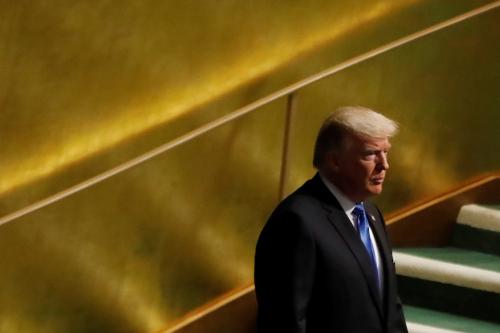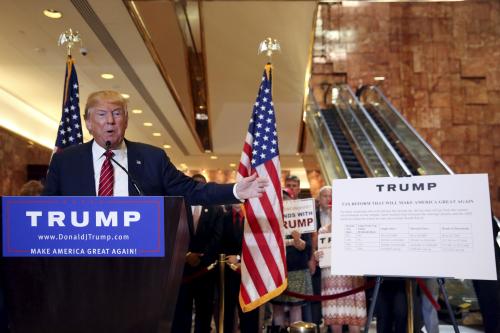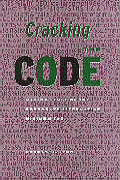Although Donald Trump claims that his forthcoming tax plan will be “phenomenal,” he is in truth not likely to propose something really new.
Before the election, Trump put forth a broad tax plan and then a narrower plan. But even the narrower plan created a budget deficit of roughly $3 trillion to $4 trillion over 10 years, according to the dynamic scoring of the independent researcher Tax Foundation. That steep increase in the national debt would present major challenges, given rising interest rates and much larger budget pressures from entitlement programs.
Soon after the election, President Trump lambasted the border adjustment tax ( BAT ) plan of the House Republicans. Then he began to be more favorable to the BAT because he believed — wrongly — that it would impose a large tariff on Mexican imports to pay for the wall. In fact, the BAT would effectively impose a tax on all imports, which would probably be absorbed by importing companies and their customers.
So there are three main questions about what type of tax plan Trump could propose.
First, will Trump push for corporate tax reform as soon as practical and leave individual tax reform for later? There is a much stronger consensus that corporate tax reform needs to happen — the U.S. corporate tax rate is the highest in the industrial world, which encourages U.S. multinationals to keep foreign profits abroad.
However, the problem is that pass-throughs, such as partnerships and LLCs, would not benefit from a lower corporate tax rate, so they will lobby hard for a lower individual tax rate on business income. Such an approach was included in Trump’s pre-election tax plans.
Second, will Trump’s proposal include the BAT of the House Republicans, which would involve a major change in U.S. law? Or will Trump’s proposal take a more conventional approach of lowering corporate tax rates and limiting business tax preferences?
To be sure, Trump may decide to defer on BAT to House Speaker Paul Ryan, who is quite committed to that plan and quite expert on tax matters. On the other hand, the BAT has already provoked the ire of U.S. retailers and other U.S. companies that are big importers of foreign goods.
Economists say not to worry, because the U.S. dollar DXY, -0.61% will appreciate by more than 20% and so reduce the effective price of imports. However, retailers are skeptical of whether and when these economic predictions will come true. Moreover, if the dollar did actually appreciate by more than 20% from its already strong position, that would impose substantial losses on U.S. investors holding securities denominated in foreign currencies, and on foreign countries that have issued dollar-denominated debt.
Third, if the president does push for individual as well as corporate tax reform, what will be the distributional effects? In Trump’s revised tax plan before the 2016 election, he would have cut the top income tax rate for individuals to 33% from 39.6% and eliminated the 3.8% tax on net investment income for high earners. As a result, the top 0.1% of taxpayers — with incomes over $3.7 million on average — would get an average tax cut of 14%, or $1.1 million, according to the independent Tax Policy Center.
Yet Treasury Secretary Steven Mnuchin publicly stated after the election that there will be “no absolute tax cut for the upper class.” In his view, the sharp reduction in the top rate for individuals would be offset by an overall cap on itemized deductions — which include the deductions for mortgage interest, charitable donations, and state taxes. Is this realistic?
While all of these questions are important for tax reform, the answers are likely to be complex rather than “phenomenal.” Which means that Trump’s tax plan may just be another example of this president’s hyperbole.
Robert Pozen has been a nonresident senior fellow at Brookings since 2010. In 2015, he generously committed to endow the Director’s Chair for the Urban-Brookings Tax Policy Center. Until 2010, Pozen was executive chairman of MFS Investment Management and, before 2002, served in various positions at Fidelity Investments. He did not receive financial support from any firm or person for this article or from any firm or person with a financial or political interest in this article. He is currently not an officer, director, or board member of any organization with an interest in this article.










Commentary
Op-edTrump’s tax promise looks like just another of his tweets
February 16, 2017